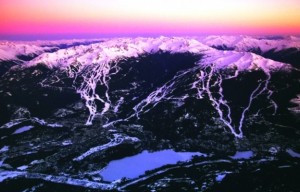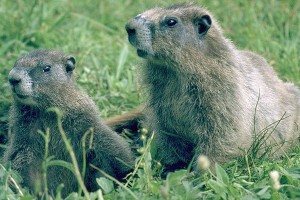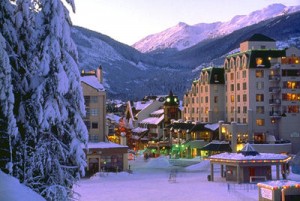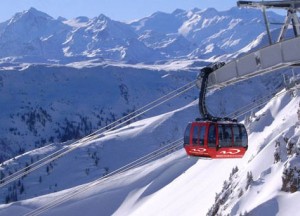
Whistler Blackcomb Ski Areas
This week’s column was supposed to begin: “Greetings from Whistler, British Columbia!” But due to unfortunate circumstances our trip had to be delayed.
Alta Lake was the original name for what we now call Whistler and it became a summer resort when the railroad first came through in the early 1900’s. Alta Lake, the town, actually contained several lakes known for their good trout fishing which drew summer visitors.
Electricity, paved roads, and skiing did not arrive in Alta Lake until the 1960’s. A group of Vancouver business men were looking to develop a site with the potential of hosting a winter Olympics. They made plans to build a ski area on London Mountain with Alta Lake at its base. In 1965 the name of London Mountain was officially changed to Whistler Mountain and in February of 1966 the ski area opened for the first time.
So why “Whistler?”

Hoary Marmots
Gary Tomlinson and Helene Martin both correctly answered last week’s trivia question that Whistler’s name is derived from the whistling sound made by the local hoary marmots who live on the mountain. Helene also said there is a pass near Whistler called “Singing Pass” where you can hear the marmots’ song.
In 1978, proposals for another ski area on nearby Blackcomb Mountain led to the development of the current Whistler Village between the two mountains. Gary Tomlinson lived in Whistler for 8 years and says the current village location is on the site of the old Alta Lake dump!

Whistler Village
Blackcomb ski area opened in 1980 under separate management and a competition began with Whistler for the most vertical. Both mountains eventually could boast of more than 5000 feet of lift-served vertical. That was the most vertical in North America until 2009 when Revelstoke became the leader.
Whistler and Blackcomb have lower elevations than ski areas in the U.S. Rockies. Their summit elevations of just over 7000 feet are less than the base elevations of most Western ski areas. The lower elevations combined with being near the Pacific coast mean that it can often be raining at the base, but snowing as you ascend to the higher elevations.

Peak to Peak Gondola
Whistler and Blackcomb merged in 1997 forming the largest ski area in North America with over 8000 acres. In 2008 the two areas were linked by a Peak-to-Peak gondola which is both convenient and a thrilling ride! At one point you’re a quarter mile above the ground.
And in 2010 the dreams of the original developers finally came true when Whistler-Blackcomb hosted many of the skiing events for the Vancouver Olympics.
Now for some follow-ups from earlier columns.
Mark Streuli who lives in Waterbury Center, but is wintering in Idaho, recognized the jump I described in my column about Vail. It’s called the Whoopie! Jump. He says that Hermann Goellner used the jump in making a ski movie and landed in the top of a tree! In the 1960’s Hermann Goellner was the first skier to do double, triple, and full-twisting flips on skis (and they weren’t short skis like the aerialists use today.)
I have continued to receive feedback about Hexcel skis. Lyndall Heyer loved her Hexcels: “I raced on the Womens Pro Tour for 2-3 years on Hexcel skis and won races!” She still has a pair in her attic and is looking for some Salomon 727 toe pieces to get them back in action.
Rick Rowell was a nationally ranked junior racer who skied on Hexcel Comps in his late teens, winning several slaloms and giant slaloms. He liked his racing skis so much he bought a pair of Hexcel Firelights for moguls and tricks. He loved them as well, but broke three pairs in two years. He also has a pair of Hexcels in his attic.
David Putnam of Stowe who does some serious mountain climbing still has his Hexcels mounted with touring bindings.
All of the memories about Hexcels made me dig my pair out of the attic. I may just tune them up and take a couple of runs before the season is over.

February 27, 2014 at 3:45 am
Greg,
Did you ski the Hexcel skis again. I owned a pair of Sundance 2 Hexcel that I bought in Colorado in 1974. I loved those skis. What length are your skis? Are they the Sundance model. I would love to own another pair, would you consider selling them to old man so he can relive his youth ? 🙂